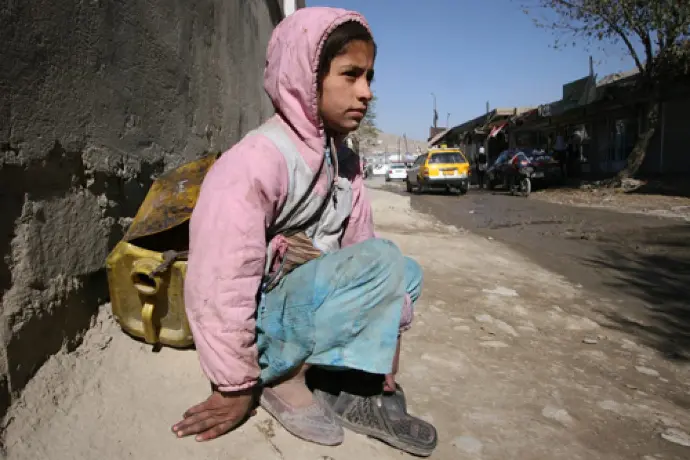Causes of Human Trafficking



Causes of Human Trafficking: Demand Factors
Understanding the Demand Factors Behind Human Trafficking
Have you ever stopped to consider what fuels the nefarious trade of human trafficking? It’s a topic that often hides in the shadows, yet it’s driven by demand factors as real and forceful as any market force. Human trafficking, a modern-day form of slavery, is a complex issue with roots that intertwine through the darker aspects of human desire and economic necessity. In this deep dive, we’ll unpack the primary demand-driven causes of human trafficking, examining how our globalized world has not only connected us but also facilitated some of these deplorable practices.
At the heart of human trafficking lies the demand for sexual services. The global sex industry is a multi-billion-dollar enterprise, and its insatiable appetite for new recruits fuels a significant portion of trafficking activities. Despite laws and international agreements aimed at protecting individuals from sexual exploitation, traffickers continue to find ways to coerce, deceive, and force victims into the sex trade. The proliferation of online platforms has also made it easier for traffickers to operate and remain hidden from law enforcement.
Factors contributing to the demand for sexual exploitation
- Societal attitudes: In many societies, there still exists a stigmatization of sex workers rather than a focus on the perpetrators and consumers of the sex trade.
- Legal frameworks: Varying laws across regions create loopholes that traffickers exploit, with some countries having legal or tolerated sex industries that obscure the lines between consensual sex work and trafficking.
- Technology: The digital age has transformed the sex industry, with traffickers using the anonymity of the internet to recruit, advertise, and exploit victims.
Another driving force behind human trafficking is the quest for inexpensive labor. In a world where cost-cutting is often valued over ethical business practices, the demand for cheap, and often exploited, labor is high. Traffickers prey on vulnerable individuals, luring them with false promises of employment and then trapping them into forced labor in various industries.
Industries affected by labor trafficking
- Agriculture: Countless workers are subjected to forced labor on farms, plantations, and in fisheries, often with little to no pay and deplorable living conditions.
- Construction: The construction industry, especially in fast-developing regions, is another hotspot for trafficked labor, with workers facing dangerous and sometimes deadly conditions.
- Domestic work: Trafficked individuals are often found in private homes, working as maids or nannies, isolated from the outside world and stripped of their rights and freedom.
In the most sinister corners of the trafficking world lies the illegal trade of human organs. Driven by the desperation of patients on long waiting lists and the astronomical profits for traffickers, this black market preys on the poor and vulnerable, coercing them to part with their organs for minimal compensation, if any.
Understanding the organ trafficking crisis
- Desperation and exploitation: The dire need for organ transplants has created a situation where those in need are sometimes willing to turn a blind eye to the source of the organs, indirectly fueling exploitation.
- Economic disparities: The stark economic disparities between the rich and the poor enable a market where organs become commodities for the highest bidder, often at the cost of a trafficked person’s health and life.
Globalization has played a dual role in human trafficking. While it has created opportunities for economic growth and cultural exchange, it has also facilitated trafficking on a global scale. The ease of travel and communication has allowed traffickers to operate across borders, exploiting differences in economic conditions and legal systems to their advantage.
Global shifts in labor demand
- Economic imbalances: The disparities between the developed and developing world have created a pool of individuals desperate for work, ripe for exploitation by traffickers promising opportunities abroad.
- Migration: As people move across borders in search of better lives, they often find themselves in vulnerable positions, making them easy targets for traffickers.
Understanding the demand factors behind human trafficking is crucial in the fight against it. Addressing these demands means not only enacting and enforcing stricter laws but also changing societal attitudes and practices that enable trafficking to thrive. It requires a multi-faceted approach that includes raising awareness, improving economic conditions, protecting migrants, and holding consumers and businesses accountable.
Strategies for disrupting the demand
- Educating the public: Awareness campaigns can highlight the realities of trafficking and encourage ethical consumption practices.
- Strengthening laws: Uniform legal frameworks across countries can close loopholes and increase penalties for traffickers and consumers of trafficked goods and services.
- Supporting survivors: Providing support and opportunities for survivors of trafficking helps to break the cycle of exploitation and rebuild lives.
Human trafficking is a dark reflection of the demand-driven aspects of our global society. By understanding the factors that fuel this illicit trade, we can begin to dismantle the systems that allow it to persist. It’s a monumental task, but one that starts with recognizing the human cost of our demands for cheap labor, sexual services, and even organs. As we educate ourselves and advocate for change, we can each become a part of the solution.
Causes of Human Trafficking: Supply Factors
The Supply Side of Human Trafficking: Vulnerability and Exploitation
Have you ever wondered why human trafficking, a grave violation of human rights, continues to persist in our modern world? While various factors contribute to this illicit activity, understanding the supply-side causes is crucial to grasp the full picture. These causes, often rooted in vulnerability and exploitation, create an environment where human lives are commodified. Let’s explore these factors and understand how they interplay to fuel the human trafficking trade.
Discrimination based on gender and sex is a significant driver of human trafficking. Women and girls are disproportionately affected, with societal norms in some regions perpetuating the belief that they are less valuable. This can lead to mistreatment and abuse, which traffickers exploit.
- Forced marriage: Young girls may be trafficked for forced marriages, often to settle debts or disputes.
- Sexual exploitation: Women and girls are also vulnerable to being trafficked for the purpose of commercial sexual exploitation.
The Role of Caste and Ethnicity
Historically marginalized groups, including those defined by caste or ethnicity, are more susceptible to trafficking. Discriminatory practices leave these communities with limited access to justice, making them easy targets for traffickers.
Poverty is a critical factor that pushes individuals into vulnerable situations where traffickers can easily manipulate them. The promise of a better life, employment, and education are lures used to ensnare individuals into trafficking networks.
- Lack of resources: Without financial stability, individuals may take risks for the promise of work, making them susceptible to false job offers that lead to trafficking.
- Debt bondage: Desperate to make ends meet, some individuals fall prey to debt bondage, a form of modern-day slavery where they are forced to work to repay an unpayable debt.
Organized Crime’s Involvement
Human trafficking is a lucrative business for organized crime syndicates. They capitalize on the vulnerabilities created by poverty, discrimination, and lack of opportunities to recruit, transport, and exploit victims.
Globalization has led to increased movement of goods and people across borders, but it has also introduced new challenges. The demand for cheap labor and services in the global market can inadvertently drive the trafficking of persons.
- Economic disparities: The gap between the wealthy and the poor has widened, leading to migration in search of better opportunities, which traffickers exploit.
- Technological advancements: The internet and mobile technologies have made it easier for traffickers to recruit and control their victims from afar.
Natural Disasters and Internal Displacement
Natural disasters and conflicts that lead to internal displacement create chaotic environments where traffickers can operate with impunity, preying on those who have lost their homes and livelihoods.
Socio-economic marginalization places individuals at the fringes of society, where they are less protected by the law and more likely to be targeted by traffickers. This marginalization can be due to various factors, including discrimination, lack of social mobility, and institutional failures.
- Limited access to education: Without proper education, individuals lack awareness of trafficking risks and the skills to secure legitimate work.
- Insufficient employment opportunities: A lack of decent job prospects can force individuals to seek employment in unfamiliar and risky situations.
Lack of Education and Awareness
Education is a powerful tool against trafficking. When individuals lack awareness about their rights and the dangers of trafficking, they can be easily misled by false promises. Awareness campaigns and education programs are vital in combating the spread of human trafficking.
Human trafficking is a multifaceted issue with roots that dig deep into the vulnerabilities of society. By understanding the supply-side causes, we can begin to address the systemic issues that leave individuals at risk of exploitation. It’s a complex battle, but one that starts with awareness and commitment to change.

 IHRO NEWS
IHRO NEWS